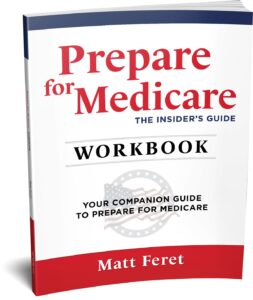I’m retiring soon and am currently on my employer’s health insurance plan. I plan on electing COBRA when my employer coverage ends.
I know there are Medicare Part B late enrollment penalties, and I don’t want to mess anything up!
I have Medicare Part A, but waived Part B until I decided to retire. Well, that time is approaching! What do I need to know?
Thanks!
Bill
Bill,
I get a lot of questions around Medicare Part B enrollment timing, working while eligible for Medicare and how Medicare and employer-based medical insurance coverage works. Yep, it’s confusing, but not impossible to navigate.
One of the most common questions I get revolves around timing Medicare Part B enrollment and COBRA. Lots of people work past age 65 and temporarily waive Part B because they’re getting health insurance through an employer or getting coverage through an actively working spouse.
The trick is making sure to time up the end of your employer-based health insurance coverage so you don’t miss Medicare Part B enrollment deadlines and get the dreaded life-long 10% penalty.
When you lose/end employer-based insurance coverage, you have 8 months to enroll in Medicare Part B (assuming you already accepted Part A). You should start your Part B coverage as soon as you stop working or lose your current employer coverage (even if you sign up for COBRA or retiree health coverage from your employer).
However to Medicare, COBRA coverage doesn’t “count” as “real” employer-sponsored health insurance.
COBRA and Medicare Part B
COBRA is a federal law that may let you keep your employer group health plan coverage for a limited time after your employment ends or you lose coverage as a dependent of the covered employee. This is called “continuation coverage.” COBRA does NOT change this 8 month time period. As soon as your employer-based insurance ends, the clock starts ticking. Getting COBRA doesn’t extend your time to sign up for Medicare.
You have 8 months to enroll in Medicare once you stop working OR your employer coverage ends (whichever happens first).
Plan ahead and contact Social Security before your employer coverage ends, so you don’t have a gap in coverage.
When you do, you’ll need two forms filled out: The employment verification form and the Medicare Part B enrollment form.
I hope this helps!
Yours,
Matt Feret
Subscribe Today to My Newsletter and Stay Up-to-Date on Retirement, Social Security and Medicare Changes!
My newsletter is an exclusive subscription-only newsletter that delivers the inside scoop to help you stay updated with your Social Security and Medicare insurance coverage, highlight Medicare and Social Security news you can use, and provide reminders for important dates throughout the year. Subscribe today for FREE!
Author Bio Matt Feret is the author of the Prepare for Social Security -The Insider’s Guide and the Prepare for Medicare – The Insider’s Guide book series and launched PrepareforSocialSecurity.com and PrepareforMedicare.com to help people get objective answers to questions about Social Security and Medicare. Matt is also the host of The Matt Feret Show. He has held leadership roles at numerous Fortune 500 Medicare health insurers in sales, marketing, operations, product development, and strategy for over two decades.






